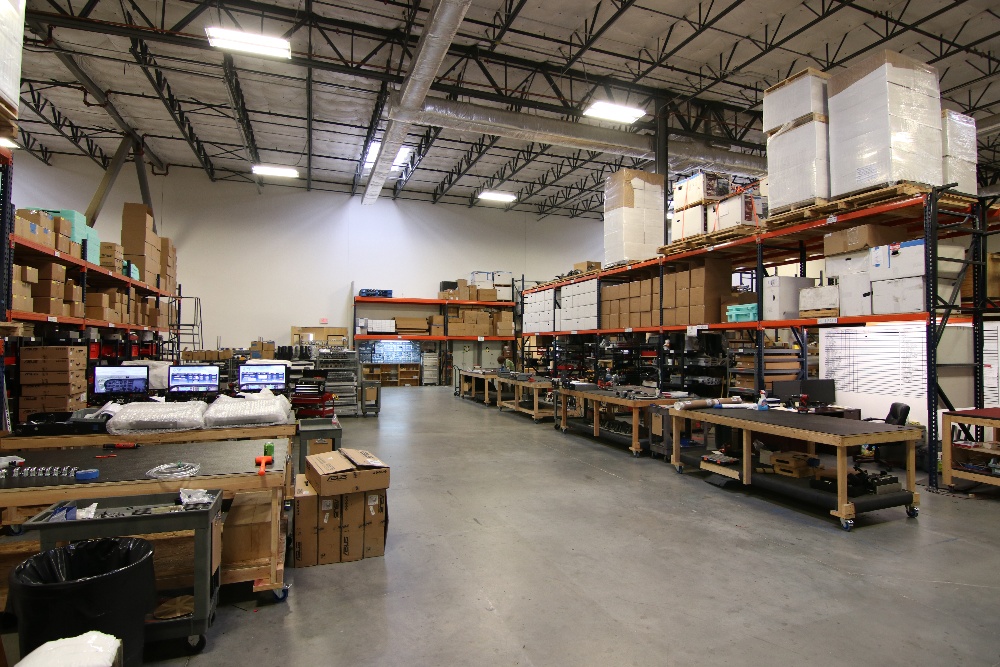The Story Behind the Medevac Simulator at Case Western
Constance Brown was at a cocktail party in Cleveland, Ohio with Mary Kerr, dean of the Frances Payne Bolton School of Nursing at Case Western Reserve University. Mary mentioned her interest in acquiring an old helicopter fuselage for the Dorothy Ebersbach Academic Center for Flight Nursing. The flight nurse students had a world-class medical education, but they needed more experience performing life-saving medical procedures in the limited space of a medevac chopper.
Constance, an active supporter of the medical community in Ohio, had a great solution to Mary’s problem: “call Joey.” Joey, Constance’s son, happens to be Joe Brown, President of Hartzell Propeller and one of the most respected leaders in the General Aviation industry.
Joe took the project on and started making calls, one of which was to Jerry Gregoire of Redbird Flight Simulations. The project became more and more ambitious as the two talked. This one-of-a-kind simulator would need to have a highly accurate interior, provide a fully immersive experience while being simple to operate and very robust. Unlike anything else Redbird had built, the passengers would be the focus of the training, in fact there wouldn’t be any flight controls or even a cockpit. It would be a truly unique machine, built for a good cause. That’s all the convincing Jerry needed.
When Joe mentioned the project would be unfunded, Jerry responded by saying “we work so we can solve interesting problems and do neat things” and Redbird was on-board. To help make the training even more effective, Jerry had the idea to mount the hull on the prototype motion platform the company developed for its new helicopter simulator. This new motion system was designed to provide pilots with all the physical cues necessary to learn the notoriously difficult art of hovering, but it would make a great addition to the experience for the flight center students. Plus it was currently a 2,500 pound paperweight since the company had started regular production of its VTO helicopter simulator.
After some scouting, the group found a 1973 Sikorsky S-76 in an aircraft boneyard outside of Orlando, Florida. Hartzell purchased the fuselage, packed it up, and shipped it to Redbird’s Austin, Texas factory. On arrival the full scope of the project became clear. This S-76 happened to be sitting on the ground in southern Louisiana when Hurricane Katrina slammed into the coast and was full of mud and debris from its short time as a submarine.
The slowly decaying interior was removed and the fuselage was taken down to bare metal, cleaned, refurbished, and repainted. Hartzell provided a functional medical interior for the new simulator and Redbird mounted the completed fuselage on its customized motion system.
 Image from "Redbird designs a flight nurse simulator" published by Aircraft Owners and Pilots Association
Image from "Redbird designs a flight nurse simulator" published by Aircraft Owners and Pilots Association
In addition, Redbird designed a unique, rear projection visual system and paired it with their world-wide terrain and visual database. The result is an accurate visual representation of the outside world that works in conjunction with the motion system to create a highly immersive experience.
Once the mechanics of the device were sorted out, Redbird’s developers built a custom version of their simulator control software, Navigator. This custom built hardware-software integration gives the instructors at Case Western the ability to select from multiple scenarios and situations giving their students a wide range of real-world experience before they ever leave the safety of the simulator.
"The simulator enhances everything covered in the classroom and gives students a chance to find real solutions, not just theoretical ones," said Stephanie Steiner, MSN (NUR '09), director of the nursing school's Dorothy Ebersbach Academic Center for Flight Nursing. "This is as close as it gets without taking off from the ground with an actual patient." [1]
The medevac helicopter simulator at Case Western is a one-of-a-kind training tool that will serve the students at the Dorothy Ebersbach Academic Center for Flight Nursing for years to come. And it all started with a call to “Joey”.
[1] Quote reprinted from "Taking Flight on the Ground" the Spring/Summer 2015 edition of think, published by Case Western Reserve University.
Share this
You May Also Like
These Related Articles

Link Trainer to Desktop to Redbird

An Interview with the Host of Winging It
